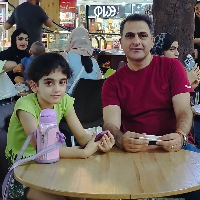Modeling the Potential of Gully Erosion Occurrence Applying Shannon Entropy and Statistical Index Models in Seymareh Region
Abstract:
Introduction
The gully erosion occurrence, due to the high rate of sediment production in the watershed, is one of the problems of natural resources management in the context of soil management and protection. It is known as an important signature of land degradation and forming as well as a source of sediment in a range of environments. Gully erosion often has severe environmental and economic ramifications worldwide such as destroying soil, damaging agricultural fields, undermining infrastructure, altering transportation corridors, and degrading surface water quality, which can be difficult to reverse. In this study, the potential of gully erosion occurrence was evaluated using Shannon entropy and statistical index models in the Seymareh region of Lorestan province. Firstly, digital layers of gully conditioning factors including altitude, lithology, slope angle, slope aspect, land use, distance from river, soil, topographic wetness index and stream power index were produced using ArcGIS 10.2. In modeling the gully erosion occurrence, the mentioned factors were regarded as independent variables and gully erosion occurrence was considered as dependent variable, whose interrelations will be determined based on Statistical Index and Shannon's entropy models.Methodology
Initially, a gully erosion inventory was prepared through a field survey. An inventory of 100 gullies was randomly divided into training group (70 %) and validation group (30 %). The weight of each conditioning factor was determined through the probability analysis of Statistical Index and Shannon's entropy models. The weights of gully conditioning factors were specified in each model based on the frequency and density of gullies. These weights were associated to each class of conditioning factors in GIS environment. Then, the map of gully-prone areas was produced using both models. Subsequently, the produced maps were validated using receiver operating characteristic (ROC) curve method and validation group. The area under this curve (AUC) was calculated for the quantitative comparison of models performances. Finally, the gully erosion potential values were reclassified into four levels, including low, medium, high, and very high susceptibility, using the natural breaks.Results
The results showed that the generated maps based on Statistical Index and Shannon's entropy models have the prediction accuracy rate of 77.3 % and 79.8 %, respectively, implying that these models are capable of detecting gully-erosion-prone areas. In addition, according to the Shannon entropy results, lithology, elevation, and land use were represented as having significant effects on the gully erosion occurrences. Visually, the highest gully erosion susceptibility of the Seymareh region was located on the center, eastern and western parts of the study area where the lithology and land use are Quaternary deposits and agriculture, respectively. From a geomorphological point of view, the areas with gentle slopes, located in high TWI and near the streams show a high gully erosion susceptibility.Discussion and
Conclusions
These models exhibited acceptable cases of accuracy for the area under study, indicating that they are highly appropriate for gully erosion susceptibility mapping. This study, not only analyzed the relationship between the gully erosion inventory and geo-environmental variables, but also illustrated susceptibility to gully erosion based on statistical analysis of conditional probability technique. Determining the susceptibility level of different regions in terms of gully erosion occurrence in order to measure the soil erosion protection is necessary, which was provided in the current study. The results of the study can provide useful information to understand gully erosion mechanisms and scientific policy-planning and decision-making in the semi-arid regions. Keywords:
Language:
Persian
Published:
Environmental Erosion Researches, Volume:7 Issue: 1, 2017
Pages:
69 to 89
magiran.com/p1749114
دانلود و مطالعه متن این مقاله با یکی از روشهای زیر امکان پذیر است:
اشتراک شخصی
با عضویت و پرداخت آنلاین حق اشتراک یکساله به مبلغ 1,390,000ريال میتوانید 70 عنوان مطلب دانلود کنید!
اشتراک سازمانی
به کتابخانه دانشگاه یا محل کار خود پیشنهاد کنید تا اشتراک سازمانی این پایگاه را برای دسترسی نامحدود همه کاربران به متن مطالب تهیه نمایند!
توجه!
- حق عضویت دریافتی صرف حمایت از نشریات عضو و نگهداری، تکمیل و توسعه مگیران میشود.
- پرداخت حق اشتراک و دانلود مقالات اجازه بازنشر آن در سایر رسانههای چاپی و دیجیتال را به کاربر نمیدهد.
In order to view content subscription is required
Personal subscription
Subscribe magiran.com for 70 € euros via PayPal and download 70 articles during a year.
Organization subscription
Please contact us to subscribe your university or library for unlimited access!



